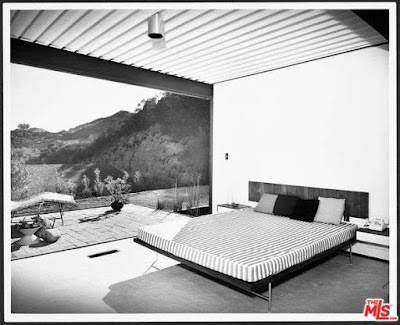In 1943 Joseph Eichler, then working in the family egg and butter business, rented one of Wright's Usonian homes in the San Francisco suburb of Hillsborough.
 |
| Sidney Bazett House utahstyleanddesign.com |
 |
| Interior of Bazett House eichlerforsale.com |
"Usonian" is a term Wright coined for the series of homes he designed in the 1930s at the height of the Depression. They were built to be economical, custom homes for the middle class, and they were typically single-story dwellings which had no attics, no basements, no garages and little ornamentation.
Eichler loved the Bazett House, but he and his family stayed there for only two years, as it was sold to Louis and Betty Frank. However, the time Eichler spent in the FLW home had a profound influence on his life. He left the family business and in 1949 founded Eichler Homes Co. Over the next 20 years, his company built more than 11,000 houses, and those still standing are in great demand for their iconic mid-century design.
Wright's influences on Eichler's homes include floor-to-ceiling glass which provided openness to nature, street walls containing almost no windows, radiant floor heating, and carports.
Eichler innovations included post-and-beam construction, glazed gables, central courtyards, and open kitchens incorporated into multipurpose rooms.
Eichler innovations included post-and-beam construction, glazed gables, central courtyards, and open kitchens incorporated into multipurpose rooms.
 |
| Typical Eichler exterior eichlerforsale.com |
 |
| Typical Eichler interior homes-in-anza.com |


























